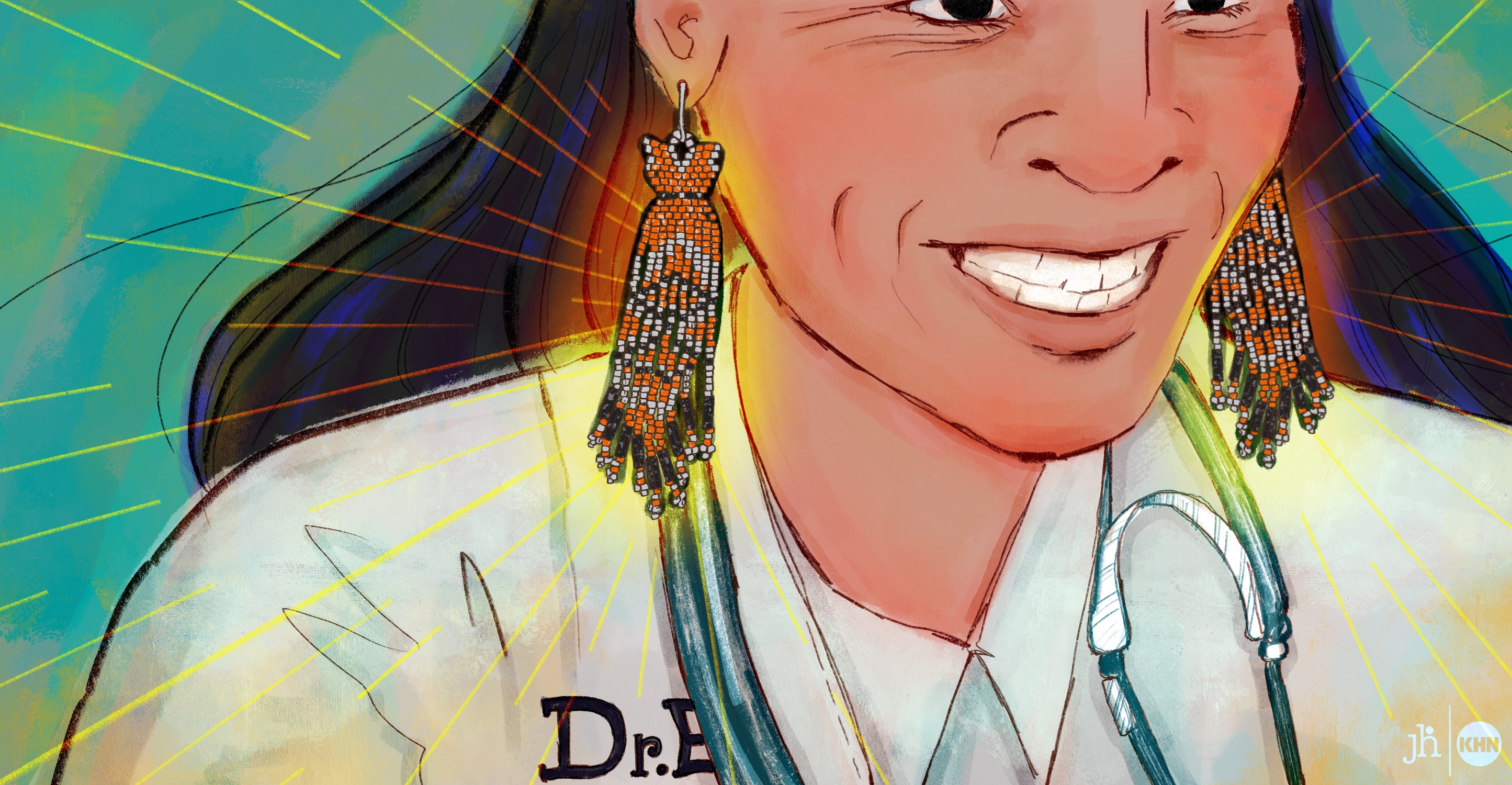Can’t see the audio player? Click here to listen.
Click here for a transcript of the episode.
Episode 9: “Two Paths, Two Future Physicians”
In 1890, Dr. Charles Eastman became one of the first Native people to graduate from medical school in the United States. Today, one of his descendants, Victor Lopez-Carmen, is a third-year student at Harvard Medical School. He described feeling isolated there.
“I did feel alone. There wasn’t any Native person around me I could turn to,” said Lopez-Carmen.
Less than 1% of medical students in the United States identify as American Indian or Alaska Native. That’s according to a 2018 report from the Association of American Medical Colleges and the Association of American Indian Physicians.
Lopez-Carmen is working to change that. In 2021, he co-founded the Ohiyesa Premedical Program, which provides mentorship and support to Native American students as they navigate the medical school application process.

While Lopez-Carmen is mentoring future medical students in Boston, in Oklahoma, Ashton Glover Gatewood has found community at the first medical school in the United States affiliated with a Native tribe. Gatewood attends Oklahoma State University College of Osteopathic Medicine at the Cherokee Nation.
“I told my husband about it, and he said, ‘That sounds like they’re building you a medical school. You have to go,’” Gatewood said.
She’s noticed a “momentum” in medical training that she said could one day lessen the health care disparities Indigenous people experience.
Episode 9 explores the barriers Indigenous people face to becoming physicians and includes the stories of two medical students working to join the ranks of Indigenous health care workers in the U.S.
Voices from the episode:
- Victor Lopez-Carmen, student at Harvard Medical School — @vlocarmen
- Mary Owen, director, Center of American Indian and Minority Health at the University of Minnesota, and president, Association of American Indian Physicians
- Ashton Glover Gatewood, student at Oklahoma State University College of Osteopathic Medicine at the Cherokee Nation — @AshtonGatewoo10
Season 4 of “American Diagnosis” is a co-production of KHN and Just Human Productions.
Our Editorial Advisory Board includes Jourdan Bennett-Begaye, Alastair Bitsóí, and Bryan Pollard.
To hear all KHN podcasts, click here.
Listen and follow “American Diagnosis” on Apple Podcasts, Spotify, Google, or Stitcher.
This story was produced by KHN (Kaiser Health News), a national newsroom that produces in-depth journalism about health issues. Together with Policy Analysis and Polling, KHN is one of the three major operating programs at KFF (Kaiser Family Foundation). KFF is an endowed nonprofit organization providing information on health issues to the nation.
[Correction: This article was updated at 8:15 a.m. PT on July 27, 2022, to accurately characterize Dr. Charles Eastman’s academic milestone.]


